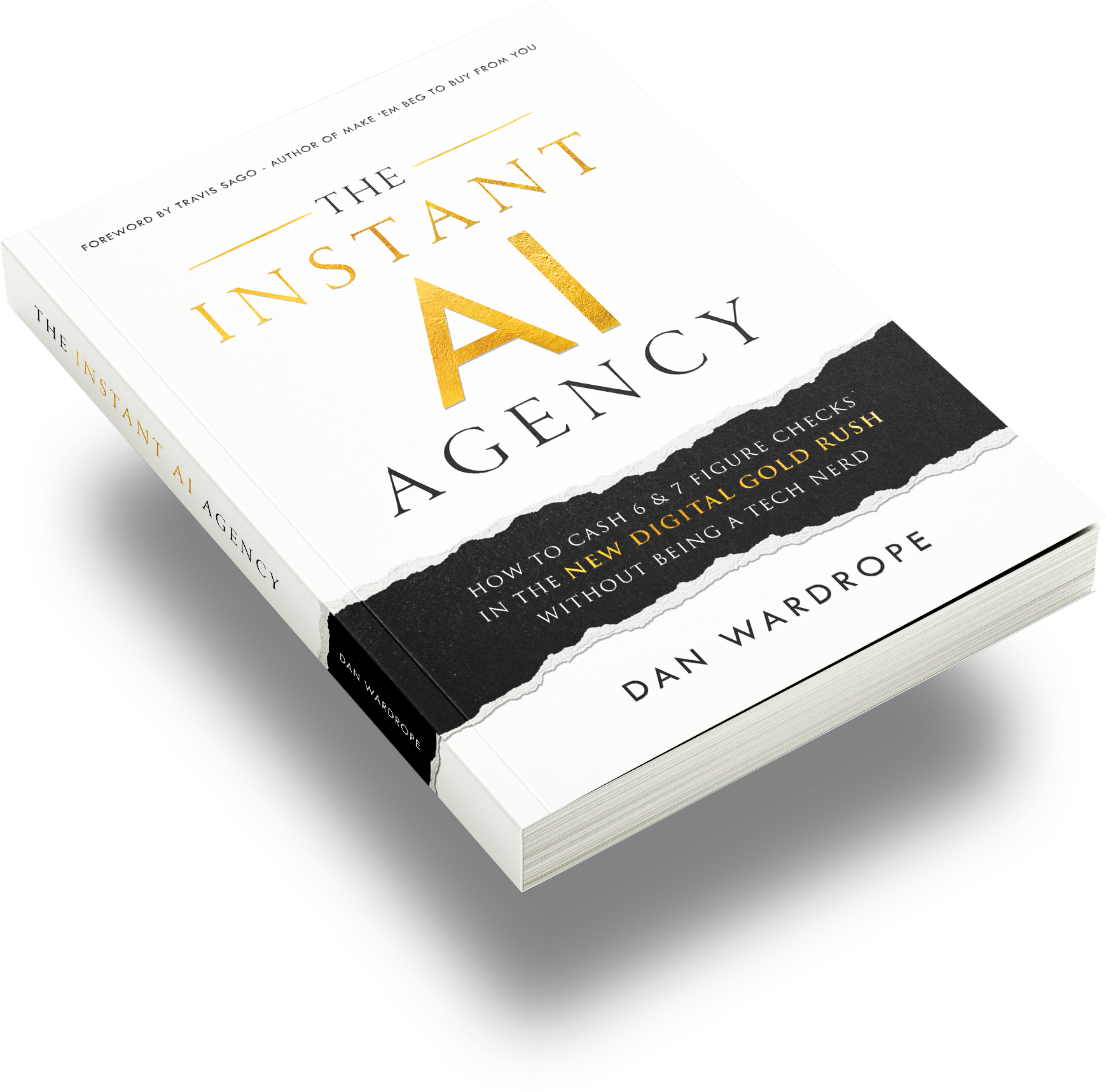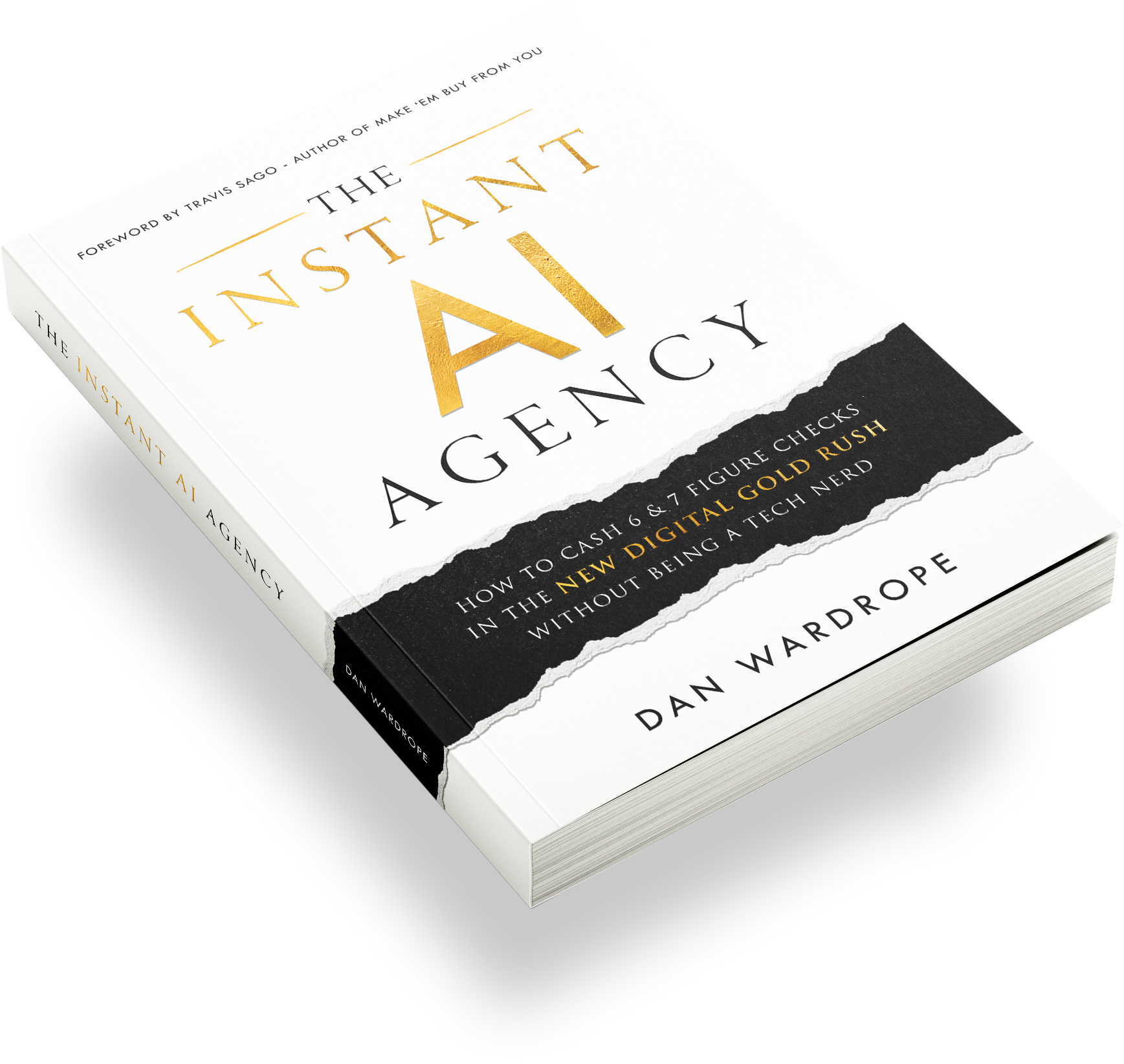People say that good artists borrow, but great artists steal.
And that’s how I got banned from the Louvre.
*Ba-dum tssshhhh*
Jokes aside, when Picasso said “good artists borrow, but great artists steal”, that’s a pearl of wisdom we can apply to any craft, including lead generation.
By “steal”, Picasso didn’t mean recreating a painting brushstroke by brushstroke and passing it off as your own.
Being a master of any field means learning from the ones who came before you.
Artists, writers, designers, and so on, are always taking inspiration from each other, and are able to pull inspiration from multiple sources.
The greatest artists among us can adapt their style to fit the project they’re working on at that moment.
And no true artist believes their work is “100% original”. To think so would be a detriment to their art, as they’d be relying entirely on what goes on in their own heads.
Attitudes like that can stop any creative work in its tracks.
In the PPC business, we call this philosophy “reverse engineering from our competitors”.
It sounds shady, but it’s literally just learning, and implementing what you’ve learned, from the people who’ve done it before you.
And then we try to make what we’ve learned even better.
When To Reverse Engineer From Your Competitors
With content marketing, you expect it to be a bit of a long, hard road. Sure, when you start to ascend Google’s rankings, and you’re getting plenty of backlinks, the hard work pays off.
Content marketing costs 62% less than its traditional counterpart, and you’ll cement yourself as an authority within your niche.
Paid traffic is a different ball game altogether. If you’ve promised a client 100 leads for next week, you don’t have time to be dicking around with trial and error.
You’ve got to get it right (or right enough) the first time. Uh, and yeah – you’ve got about seven days to do it.
Now, you could spend the next seven days torturing and twisting your brain into knots, trying to think of something 100% original.
This client’s niche isn’t one you’ve worked in much before, but you’re sure you can come up with a best-selling idea if you just sleep on it.
This “publish and pray” technique often leads to disheartening results. The ideas behind the funnel are haphazard at best, based on what you think the customer wants, as opposed to what they actually want.
You managed to get 100 leads, but you’re not too sure about the quality, and you can only hope you’ve hit the client’s required contact rate.
Oh, and the whole experience was exhausting. Horrible, nerve-wracking, disappointing and exhausting.
Somehow, you’re not feeling all that pumped for Round Two.
How To Escape "Retainer Prison", Wrestle Back 100% Control Of Your Time AND Give Yourself A Raise By Firing Your 10 Bosses (Clients)

Lemme show you how to fire “pain in the butt” $2,000 a month retainer clients and replace them with $2,000 a DAY Pay Per Lead PARTNERS. Just press the button below quietly (so the warden doesn’t hear) and I’ll slide over my free “Retainer Prison” Escape Plan via email or Messenger, whatever suits.
The Bitter Truth
So, yeah, 90% of that hassle could be avoided if you had swallowed your pride and done your research.
If your friend called and said, “I need to do a big project. I’m not sure what I’m doing, but I’m on a deadline, so I’m sure I’ll get there eventually,” would you support them stabbing about in the dark?
You don’t need to reinvent the wheel to get leads. Most of the time, a sound basis for what you need to do is just a Google search away.
It’s then up to you to deliver the same content in a unique or improved way.
So, the first thing to do when reverse engineering from your competitors is…
How To Reverse Engineer From Your Competitors
1. Reverse Engineering Using Google
To find out what’s nailing it out there in the lead gen space, Google is your first port of call.
Say you’re going to be running ads for car finance. Google “cheap car finance” into Google and click on the first four searches that pop up.
Take a look at the landing pages. Chances are, they’re all quite similar in a lot of respects. You’ll want to take note of:
- The copy your competitors have used
- The overall layout of the page
- The critical hook or hooks that drive audience curiosity and desire
- How your competitors ask for visitor details. Are they using a quiz? If so, why? How many questions? Are they using those questions to segment the leads in some way? Is it clear that they’re looking for a particular type of customer, or are they taking everybody and anybody?
From there, you need to start working out how to can simulate or improve the results you’ve pulled up.
Copy
- What’s the headline? How does that help draw customers in?
- What tone are your competitors using?
- Is everything written with perfect grammar, or is the style a little more casual?
- Does the content appeal to emotion? Or does it rely more on facts and features?
- What story can you take from the copy? (Everything has some sort of narrative, even a list of bullet points).
- Delve deeper. How does your competitor use customer psychology to their advantage?
- What HAVEN’T your competitor’s said? Why is that more important than what they HAVE said?
- Any testimonials or reviews? How will they impact the visitor?
Layout and format
- What images do your competitors use? How many?
- What’s the colour scheme? Is the page designed to stand out, or is it more neutral? How does colour impact the visitor’s buying choices?
- Is all the essential information (features & benefits) above the fold? Or do you need to scroll?
- Are there any pictures of the CEO, employees or office? How would those images help generate leads?
- What fonts do your competitors use? TIP: If you can’t name a font just by looking at it on the page (and hardly anyone can), I highly recommend downloading Fontface Ninja. It’s a FREE extension that lets you inspect, try, buy and bookmark the fonts that appear on any website.
Hook/Hooks
Every marketer knows the power of a good hook. If you’re not sure, a hook is a single word or phrase that describes the main benefit of an offer.
So, going back to car finance, the hook may be as simple as: “Car Finance With No Deposit”.
Look at your competitor’s pages and work out the following:
- Why is their hook intriguing?
- What pain point does it hit on?
- What solution does it offer?
- Is it clear and precise?
- What action does it compel you to take?
Going back to “Car Finance With No Deposit”…
Why is their hook intriguing?
Car finance is pretty simple. The more you borrow, the more you’ll owe. Usually, there’s a hefty APR added to the mix.
On top of that, many car finance companies expect you to put down a deposit. Simple, yet genius, the promise of no deposit is enough to lure customers in.
What pain point does it hit on?
Borrowing money is necessary, but it’s a pain in the ass – especially when it’ll take years to pay off. One missed payment can lead to fines, increased APR, or worse.
A hefty deposit on top of all the repayments can send you into a financial tailspin – it may prevent you from getting a new vehicle altogether. Do the risks outweigh the benefits?
What solution does it offer?
The hook indirectly promises to save the customer money. Or, if they don’t save money due to APR, the customer at least won’t have to pay a large sum of money upfront.
Is it clear and precise?
At only five words, the hook couldn’t be clearer.
What action does it prompt you to take?
Look at the landing page, make enquiries. A no-deposit deal catches attention far more than the usual “cheap rates”.
It doesn’t ask you to make a commitment outright either – there’s no “limited time” framework, so you can do your research and make a decision at your own pace.
Details Form/Quiz
See if your competition is using a landing page leads form or a quiz.
Quizzes are becoming more and more popular in lead generation, simply because they’re a great way to get more data from potential customers.
They also allow marketers to segment their leads, based on the way the customers have answered the questions.
With car finance as an example, an unemployed visitor with bad credit probably isn’t the type of lead your client wants.
With a leads form asking for a name, address and telephone number, you won’t get that kind of information. Quizzes save the client time and get you a higher quality lead.
Quizzes also benefit the potential customer. A person may be unwilling to type out a few sentences, but they’ll hand over information for the sake of a couple of clicks.
That way, the potential lead isn’t doing any of the heavy-lifting. They also feel like they’re getting an experience more tailored to them and their needs.
If your competitors are using quizzes, take note of the questions they’re asking. Chances are, none of them will require more than a click or a couple of words.
The customer is literally making a very small micro-commitment each time.
Then take a look at the quiz as a whole. How do your answers take you down different strands of the tree, towards a “we can help you?” or “we can’t help you”? What kind of results do you need to mine to find your client’s ideal lead?
By reverse engineering your competitor’s quiz, you’ll soon end up with a tree that looks a bit like this:
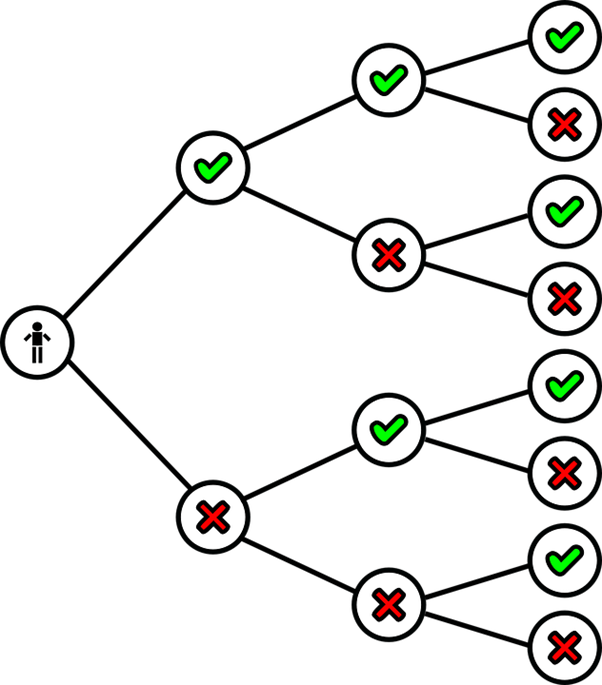
Organic Searches
Just by Googling your vertical, you’ll come out with a tonne of useful information. Take screenshots, make notes.
Put all of your findings into a Google Doc and make it into a swipe file or commonplace book.
But don’t just stick to ads. Scroll down the Google searches and take a look at some of the top organic content. These guys can generate leads from SEO, informative content, and by giving the customer what they want.
So, it’s well worth reverse engineering from your competitor’s organic content.
Again, take notes of what you find, then add them to your swipe file. You should have plenty of ideas already.
2. Reverse Engineering Using AdGenius
If you’ve never heard of AdGenius, you may want to hop on the bandwagon right away.
Put simply, AdGenius is a “cloud-based Facebook ads spy tool” that’s “been created to show you examples of Facebook ads in your niche market”.
The tool has advert data for both the UK and US.
At $99 a month, it’s not what you’d call cheap. Still, for that price, you get valuable insights into your competitors’ ads. Features include:
- Being able to see Facebook ads from any industry
- What keywords your competitors use
- Competitor’s mobile and desktop ads
- Insight into tracked links
- Previews of a competitor’s landing page
- All advert data
And much more.
AdGenius means that when you type in “car finance”, 100s of Facebook ads in that niche will come up, ready for you to peruse.
You’ll also get to see the ads’ engagement, likes, comments and shares.
I suppose the great thing about AdGenius is that as much as it shows you what to do, it also shows you what not to do.
You can look through hundreds of ads, all of varying quality.
Again, take notes of what works and what doesn’t. If one ad was particularly popular, ask yourself why.
You may be having difficulties creating ads as a writer but, as a consumer, you’ll know on a gut level what works for you.
Jot down:
- What copy the competition are using in their ads
- The copy on their landing pages
- The loading time for the landing page
- What the competition’s funnel looks like
And so on. Add your favourites to your commonplace Google doc, so that you can reverse engineer the heck out of them later.
3. Reverse Engineer Using Facebook Page Transparency
Now you’ve taken a look at AdGenius, search for the Facebook pages these companies are advertising under.
Once you’ve found their fan pages, you can take a look at the ads your direct competition are currently running.
Though you won’t be able to see any stats about the ads (demographics targeted, likes, comments),
Page Transparency is still a great way to see what ads your competitors are putting out there.
Take note of the language used, the headlines and the images.
To see the ads, scroll down the fan page until you see this box on the right-hand side:
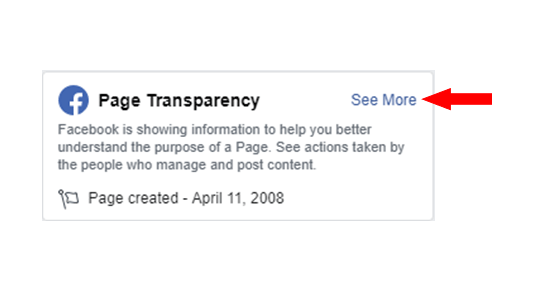
Click “See More”.
A new box will pop up, listing the page history, the people who manage the page, and whether the page runs any ads.
Click “View In Ad Library” in the “Ads From This Page” section.
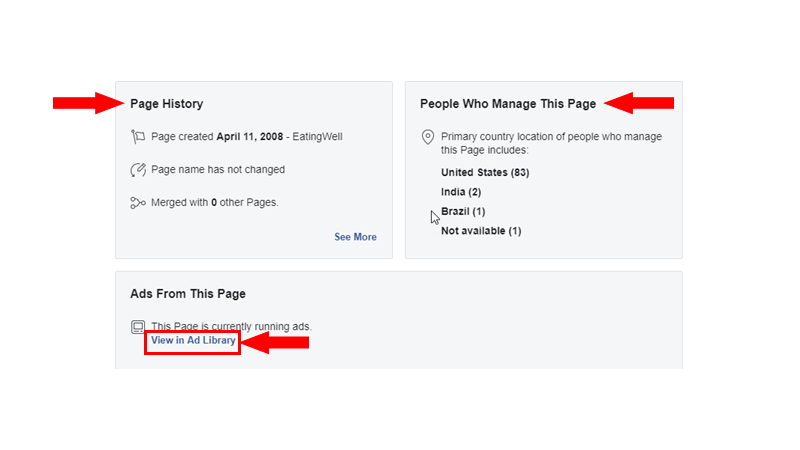
Near the top of the page, you’ll see a small box that says “Filter By”. If you’ve got any options, select what country you’d like from the drop list.
There, you’ll be able to see all active ads currently running from the page. They’ll all be in month order, and you can see the day they became active.
Underneath each advert, you’ll be able to see “See Ad Details”.
Unfortunately, Facebook doesn’t tell you any stats about the ad or let you see any comments and reactions.
Still, you’ll be able to check out the copy and the images they’ve used, as well as see the page’s variations of the ad.
Go on, shove all of your findings into that Google doc. At this point, you should have a comprehensive analysis of what’s working in this market.
Again – I can’t stress this enough – the idea of this exercise isn’t to see what’s been done before and then try to come up with something different.
Don’t reinvent the wheel – use all these golden nuggets to reverse engineer from your competitors and get those leads rolling in.
4. Reverse Engineer Your Competitors Using Native Advertising
Curious about advertisements outside of Facebook? It’s time to check out the native advertising in large online newspapers such as The Sun and The Daily Mail.
For those of you who don’t know, native advertising is the “use of paid ads that match the look, feel and function of the media format in which they appear.
Native ads are often found in social media feeds, or as recommended content on a web page.
Unlike display ads or banner ads, native ads don’t really look like ads. They look like part of the editorial flow of the page.
The key to native advertising is that it’s non-disruptive – it exposes the reader to advertising content without sticking out like a sore thumb.”
(Outbrain.com).
Here’s an example of blatant native advertising, from the Daily Mail online:
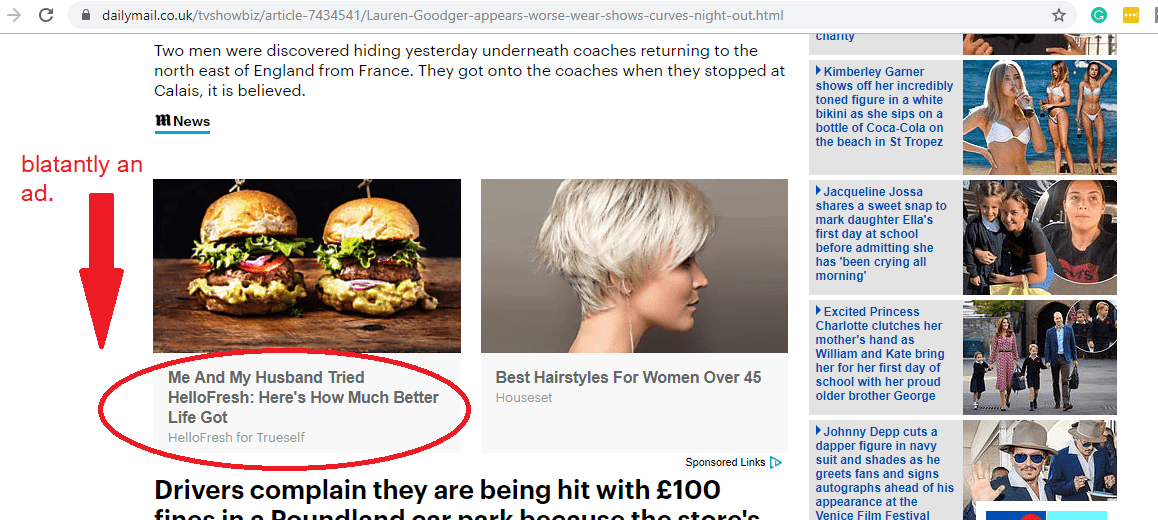
How are ads like these useful for your funnel? Well, in some cases, marketers like to use something called an advertorial to help generate leads or sell their product/service.
“Advertorial” as a word, is a mashup of the words “advertisement” and “editorial”.
As Outbrain explained earlier, they’re adverts written in the style of an article (“match the look, feel and function of the media format in which they appear”), and they subsequently allow brands to sell their product in an engaging, informative or credible way.
But the purpose of an advertorial isn’t to start walloping your prospects with a hardcore sales pitch.
An advertorial is designed to sort of “slowly seduce” the prospect. Say, for example, you were going on a date with a potential suitor.
You’d take them out, talk to them, and show off your numerous charms. You definitely wouldn’t propose, sweating and fumbling on the first date.
Apply that theory to an advertorial. These ads are designed to entertain, inform, and generate interest.
Give the reader enough information to feel genuinely excited about the product, without being pressured into making a commitment (aka, getting out their wallet). This “slow seduction” takes the form of about 500 to 1000 words.
Any longer, and you’ll risk the reader getting bored. With so few words, you’ll need to craft an advertorial with the same care as you would a short story.
The general rule for advertorial content is:
70% Good Content + 30% Sales Pitch = A Balanced Advertorial
Advertorials make a pretty darn sweet sales funnel. If your prospect reads the information, then hands over their details after the CTA, you can sure they’re a high-quality lead.
That’s all very well, but writing an advertorial is no easy feat for someone who’s not done it before.
Search for a large online newspaper. You’ll see plenty of advertorials near the bottom of any given page.
Even if you can’t find any in your chosen vertical, I recommend reading at least four or five.
Doing so will give you a good idea of how an advertorial is crafted. What methods of persuasion to they use?
Does it play on emotion or offer valuable facts about the product/service?
When reading native adverts/advertorials, ask yourself these questions:
- What’s the headline? Why does it hook you? Does it do anything unexpected? Does it tell a story? What emotions does it stir up?
- Does the advertorial relate its message to real life? What impact does that have on you, as a reader? Does it make you trust the product any more?
- What features and benefits doe the advertorial highlight? How are the features and benefits of the product/service linked?
- Does the advertorial make you genuinely believe that this product/service will make your life better?
- How do the images in the advertorial complement the text?
- Are there any quotes in the advertorial? Where are they from? Satisfied customers and/or experts in the field? How do the quotes give credibility to the product/service?
- What call-to-action do they use? Is it subtle and in line with the rest of the article, or is it more hard-hitting? Does the tone of the advertorial change? Has the article enticed you to take the action encouraged?
Remember, marketers pay a LOT of money to have these articles in newspapers like the Daily Mail.
The articles you’re reading are probably the results of many rewrites and split-tests, offering the final, polished version to the public.
So, even if you can’t find advertorials in your vertical, take careful note of the craftsmanship.
Chances are you’ll learn a lot, even if you can’t directly reverse engineer from them.
5. Top Reverse Engineering Rule: Follow All Of These Steps Regularly
All the tips from this post should be repeated monthly, at the very least.
Facebook isn’t an “upload and leave it” platform. In fact, Facebook experts recommend that you refresh your creative every two weeks.
Of course, if an advertorial and landing page are very successful, you should keep them.
But Facebook ads (the gateway to your funnel) should be regularly updated to prevent ad fatigue.
Plus, your work can only be improved by practice, practice and more practice. If you’ve got an ad that’s doing very well, don’t settle for it.
Pull apart why it’s done so well, then try and make it better than before.
With practice and time, you’ll soon find that your competitors are reverse engineering from you!
So, keep your eyes open for new ads, check AdGenius, Facebook, and keep adding to that commonplace Google doc.
By repeatedly reverse engineering from your competitors, you’ll have direct insight into what the “big boys” are doing, and will be following the path laid out by them.
Doesn’t that sound so much better (and easier!) than striking out on your own?
If you need more support and tips, join our Facebook Pay Per Lead Ninjas group.
It’ll give you the best insight into what kinds of ads are working so you don’t have to waste your time and money.





